Screaming Sixes + Plug Leads + Powertools - Morley 407



|
Screaming sixes, dud leads, rampant powertools, and the birth of the electric starter
MORLEY'S SOAPBOX
What's the catch?
As you would know, Holden is now gone as a local manufacturer. Yes, I know, we’ve had a couple of years to get used to it as Australia seems to be entering a post-industrial phase. (Did we learn nothing from Thatcher?)
Anyways, there are a lot of blokes and blokettes out there, squatting in corners, rocking back and forth, having lost their minds at the loss of Aussie cars. It’s really the thought of no more big-engined, rear-drive cars that is giving us the lie-awakes.
Until now, the solution has been to shop for a BMW or Merc, but for many, that’s not going to be a fiscal reality. So, wait for the next Commodore? Er, maybe not. From 2018 onwards it will be a front-drive, four-cylinder car. And those rumours of an all-wheel-drive V6 with a pair of turbos fizzled out when somebody ran a tape measure over the engine bay and figured out that there wasn’t enough room for the turbos to live. So scratch that option, then. Ford? Who knows. The fact that Ford Oz has retired the Falcon badge doesn’t bode well. Am I reading too much into that? Seems not. The whisper is that Ford Oz passed on the all-wheel-drive, 2.7-litre V6, twin-turbo Fusion (kind of a US-made, hot-rod Mondeo) because of projected low volumes.
So we’re still up the creek and light on for paddles, then? Again, maybe not. The emerging trend is twin-turbo V6s are looking like the performance powerplant of the future. What if you could march into an Australian dealership today and plonk down your readies on a full-sized car with such an engine layout, the same straight-line performance as a Commodore SS-V Redline, rear-wheel-drive and you’ll get change from fifty-large? You’d be on your bike in a second, right?
So what’s the catch? None really, it’s reality. Okay, so the dealership won’t have a blue oval or a red lion above the door. It’ll have Kia signage, but that shouldn’t put you off. The car is the Kia Stinger (beaut name, no?) and it makes 272kW from its 3.3 litres and 510Nm of torque. It gets from rest to 100km/h in five seconds and it covers a quarter mile in 13 seconds. I know, ‘cos I ran those exact times when I drove it recently.
I wouldn’t call it a potential XR6 Turbo or Commodore SS replacement, but against the now non-existent Ford G6E or Holden Calais V8 it is. It aint perfect, but it sure as hell slots into the psyche of people like us, better than a front-drive hatchback with a three-cylinder turbomotor running on dolphin hugs.
I’m not mad about the Kia’s steering feel and the eight-speed auto could use a proper manual mode to make up for the lack of a manual-trans option. But it looks the part and it goes like a good ’un. The rear-drive power-down and step-off is something I’ll never get tired of. Oh yeah, the other negative is that it won’t do a skid, the electronics won’t allow it. How do I know? Never mind.
The Stinger isn’t a flash-in-the-pan model and who knows, the Kia might get other car-makers thinking about similar layouts. I like that Kia is thinking outside the box, too. For many years, we’ve been told that front-drive and east-west engines are more efficient in packaging and safety terms. Meantime, I’ve always suspected that if you can’t make a car the size of the Stinger crash properly and feature enough interior space for five adults (regardless of which way the engine is pointing) then you’re not really trying.
Here’s another reason, the Stinger has a seven year/unlimited kilometre warranty. That’s great news for those who like a big slug of depreciation to sweeten the deal. It means we can, in a year or three, latch on to a slightly used Stinger, from a user-chooser lease with four years of factory warranty still to run.
I’d still like to be able to buy an XR6 Turbo or SS-V Redline. That’s not going to happen, but in this case, it’s already happened. Somebody is on our side.
Here's my tip
Guard down
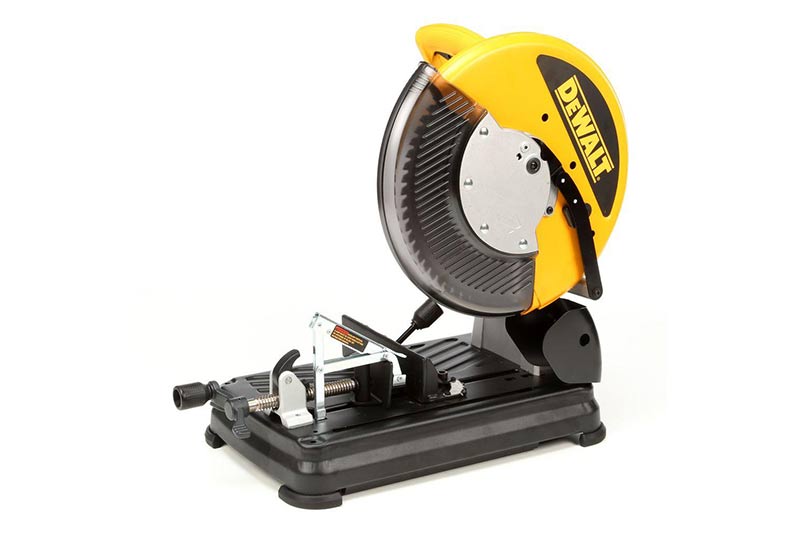
If your workshop equipment has guards and guides and clamps and lock-downs, for Pete’s sake use them. Trying to hand-hold a piece of metal in a cut-off saw that also features a clamping system is just plain dumb. How do I know? Buy me a beer one day and I’ll show you the scar. Yep, another trip to emergency for Morley. Only two stitches this time, but maybe lesson finally learned. Ever wondered if your only purpose in life is to act as a warning to others?
LETTERS
Screamin’ sixes
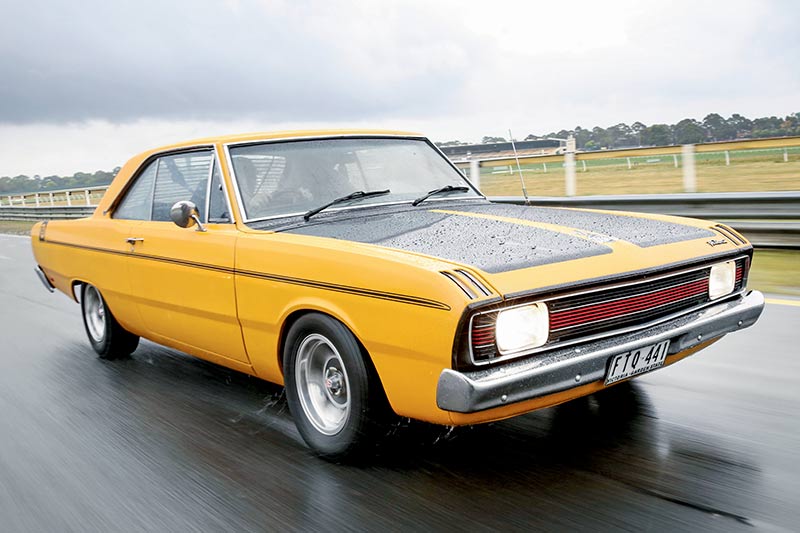
I would like to lob my two cents’ worth into the discussion on the aural pleasure of naturally aspirated engines. Last year I was invited to attend the final V8 Supercars event at Homebush in a Dunlop-sponsored corporate box. One of the highlights of the day was the sound made by Cameron Tilley’s Pacer, powered by a screaming six-cylinder Hemi engine in the Touring Car Masters event. The howl of that machine as it powered down pit straight at mega revs was absolutely spine-tingling stuff, particularly for an old Mopar tragic such as myself. Do yourself a favour; jump on Cameron’s Facebook page, find the video of the Pacer on the dyno, turn the volume up and enjoy. You’re welcome.
Richard Mahoney,
NSW
Richard, I couldn’t agree more about the delight that is the racket of a tuned Hemi six going off its brain at max revs. I’ve always been a fan of the straight six, even when all my schoolmates were banging on about V8s. And later again, when the world started to move towards a turbocharged future, the wail of that inline six-pot was even more of a breath of fresh decibels, what with the turbocharger chopping up any intake noise and effectively muffling the exhaust.
The Valiant six was definitely one of the better sounding six-bangers, but I have a real soft spot for the old Holden red motor, too. By the way, did you know that the `Hemi’ tag for the Val engine is a bit of a misnomer? A true Hemi engine gets its name from the hemispherical combustion chambers. But the Chrysler 245 and 265, if you look closely, don’t really have such a layout (particularly as, unlike a V8, they don’t use a cross-flow design). Still, it made for a great badge, no?
Factory funnies
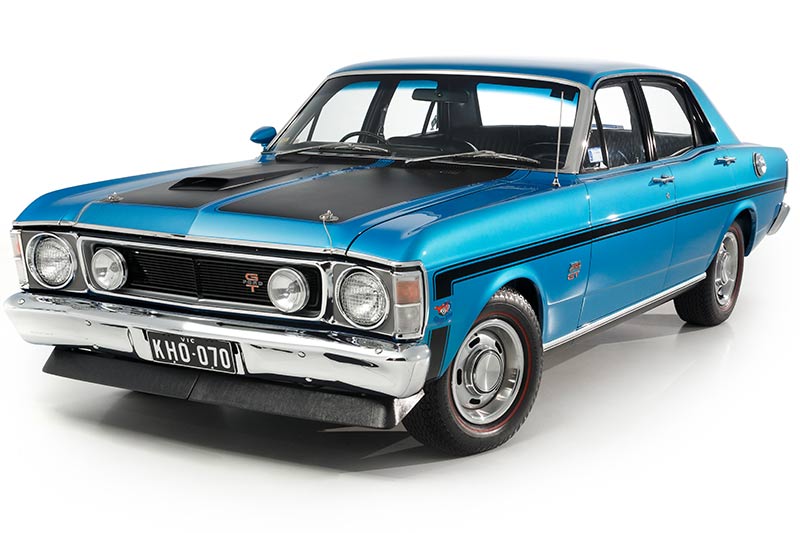
Thanks for this mag as I have been reading and loving it for many years. I can’t help but get involved in the conversation about what came out of the factory in the days of the XW/XY Fords.
I started work as an apprentice mechanic in 1970 (the golden years of the Falcon) in a small country town. Everybody knew what new cars were coming to town as they got delivered on an open transporter and were unloaded just out on the main street. My job was to take them into the back alley and wash the protective delivery wax off with power-kero. I did everything from Escort panel vans to a Phase 3 GTHO. Those were the days.
The most unusual one I saw is one that would today be assumed a mock-up because of the spec. But you need to remember that in the 70s, deals were quite often done in the local bar at the hotel that could sometimes lead to the incorrect boxes getting ticked. In this case a customer ordered a ZC Fairlane 500 with a 351. When we unloaded it, we discovered that it had a four-barrel 351 Windsor and nine-inch diff. But the big surprise was the Top Loader four-speed. The customer refused to take it as he wanted an auto, so it sat in the showroom until well after the XY was released as nobody wanted a manual Fairlane.
I think the interesting thing here is the willingness of Ford to build what people or dealers ordered and the drivetrains that were available at the time. So, these days, when I see a three-on-the-tree 351 V8 XB ute for sale, I say never say no such thing, it just might be.
Brian (Dicko) Dickson,
Email
Hey Dicko, lovely to hear from somebody who used to get their mitts dirty on brand-new Phase 3s. And, yep, what a time that was for the Aussie car industry and blokes like us, eh? I have absolutely no problem believing your story, because I’ve seen very similar things myself over the years. Curiously, like your experience, the weirder ones have involved 70s Fairlanes. If your theory about the pub factor is right, maybe Fairlane buyers back then were more fond of a frothy ale than everybody else and that’s why their orders got mucked up more often than other models.
Anyway, the first weird Fairlane I ever saw was a ’78 or ’79 model which, like the one you remember, came with a factory-fitted four-speed manual. Being a manual kind of guy, I rather like the idea. And clearly I wasn’t alone. But the other one was even more interesting and amounted to an XY GT Falcon in a Fairlane body. It was an auto, but it had the GT-spec 351 and a nine-inch and even a GT-spec dashboard. Apparently it was a special order by somebody high up in some big company or other and Ford was very happy to take the bloke’s money and build him a long-wheelbase GT.
The new owner took me for a ride in the thing and it fair dinkum hammered. You’d have been king of the kids back in 1971, let me tell you.
Kit questions

I have an English kit car called a Marlin which looks like a 1934 Alfa Romeo 6C. The donor car is a 1975 TC Cortina two-litre four-cylinder. It has a 3.75:1 diff which, with 195/65 15 wheels gives me 3250rpm at 100km/h. Maximum torque is at 3500rpm, as the motor is standard. It has a Salisbury rear axle. So here are my questions:
1. Do you think the diff from the 6 cylinder would fit? This has a 3.23 ratio.
2. How many RPM would I be doing at 100km/h with this ratio?
3. Would this 96 brake-horsepower motor pull this higher ratio without losing too much overtaking acceleration at 100km/h in fourth gear? Would third gear be necessary for this manoeuvre? The motor spins to 6300rpm for max horsepower.
4. I am only achieving 12.4 l/100km on the highway which seems excessive. Is this so?
5. What improvement in economy would I expect with the higher diff?
6. The exhaust pops on the over-run which tells me the ignition is retarded, but the timing light shows it is spot on and the dwell is okay. Could the marks have been stamped inaccurately?
7. Some say my dizzy is Lucas and some say it’s Bosch. How do I tell which it is?
David Goodsir,
Email
Okay David, let’s tackle these one by one: Now, your first question seems, on the surface, a pretty simple one. But you would not believe how many phone calls I made trying to find somebody old enough to remember TC Cortina diffs who is still in the industry. But the general consensus seems to be that the four-cylinder TC Cortina used a physically smaller, 23-spline diff, while the six-cylinder Corty, with its gruntier engine, was fitted with a bigger, 25-spline diff.
I don’t have a problem with this theory, because it kind of stands to reason. The four-cylinder TC was the Brit-spec thing while there was no six-banger TC sold anywhere but here (and maybe South Africa or somewhere). Point being it was engineered by Ford Oz to accept the Falcon’s six-potter. And that being the case, there’s a fair chance it got a narrowed Falcon diff in the process. Which would explain why the two versions of the Cortina have different diffs. The bottom line being that, no, you can’t just swap one for the other. What you might be able to do, however, is either find a different ratio that will fit your four-cylinder diff, or graft the whole TC six-cylinder axle into your Marlin. Then, you’d have a choice of ratios because any six-cylinder Falcon diff-centre from that era should bolt in.
Next: If you do manage to fit a diff centre with a 3.23:1 ratio, it’s a simple (I hope) set of calculations to work out your revs at a particular road speed. Since 3.23 (the new ratio) is 86 per cent of 3.75 (the old ratio) it shakes out that you’ll then be doing 86 per cent of your old revs at the same speed. Which means your engine speed at 100km/h drops from 3250rpm to 2795rpm. And that’d be a worthwhile gain, yes? Actually, I completely made that methodology up – the percentage thing – but it seems a logical approach to me. So if I’m wrong, can somebody please let me know.
You will lose some overtaking flexibility, particularly as you’re almost at peak torque at 100km/h with the set-up you have. But the Pinto four-cylinder is a fairly grunty little gadget, so you should still be able to overtake in fourth. And shifting back to third for max thrust? Well, that’s what a gearbox is for, isn’t it. But here’s where it gets murky again, because my info says the TC Cortina with the 3.3-litre six used a 2.92:1 diff ratio, while the 4.1-litre version had an even taller 2.77:1 diff. No mention of a 3.23:1. But, as we’ve already discussed, that might be academic unless you’re prepared to swap out the whole drum-to-drum assembly. By the way, David, I reckon you’re pretty game revving a stock Pinto to 6300rpm. And there’s probably not much to be gained as I’d have thought the stock two-litre’s power peak was closer to 5500rpm (or maybe even 5200rpm) rather than the 6300rpm you’re quoting. Unless we’re talking a heavily modified engine at which point all bets are off.
Now, 12.4 litres per 100km on the highway does sound a fair bit of fuel for a plastic-bodied, four-cylinder Alfa replica to be using. Changing to a taller diff should theoretically improve this, provided you don’t go crazy and over-gear the thing, forcing you to use more throttle to keep the engine on the boil. That said, there’s a whole lot more to fuel consumption than just diff ratios. Aerodynamics come into it, tyre pressures, kerb mass and even (in fact, especially) the way you drive the thing will all have an effect on this number. But yeah, 12.4 litres sounds high and, in fact, only works out to 23 miles per gallon in the old money. Meanwhile, trying to predict fuel economy before a proposed diff change is really stabbing in the dark.
Just as poor fuel economy has many causes, so does an exhaust pop on the overrun. What’s much more likely than incorrectly stamped timing marks is a leak somewhere in the exhaust that’s letting air into the system and igniting unburned fuel. A dribbly carburettor will contribute to this, making the problem worse. In fact, in the last of the Commodore SSs, the 6.2-litre version, the computer deliberately injects a small amount of fuel into the engine when the throttle shuts so that this snap, crackle and pop process can occur. All in the name of aural satisfaction.
Now, which dizzy is which. The best way would be to look at the part number stamped somewhere on the distributor. But my cruel mate, Goober, has a simpler method. His advice is: crank the engine. If it fires, you have a Bosch dizzy, if it doesn’t, you have a Lucas. Harsh, but somehow fair.
Bum lead

Recently, you did a short piece on ignition leads and spark plugs: Workshop basics, I think it was. And now Dave, (with his foray into changing leads on the fuel-injected five-litre Holden engine) has ‘plugged us in’ to life before we had individual coil packs. Dave’s ignition lead job on his Holden V8 is right up there with the three hours it used to take to change a Mini 850 fan belt on the side of the road.
But on the subject of high-tension and ignition leads, there was a time when we mechanical people (who knew little about volts and resistance and stuff) would throw our carbon-core leads away after a spark-plug change and fit copper core wire ones. The reason being that invariably the core of the carbon lead had been fractured when we removed the leads and the engine ran worse with the new plugs in than it did with the old ones.
Our electrical logic was such that one didn’t care if the resistance was not correct at each plug, at least with the copper wire, the bugger fired on all eight and ran like a dream. Of course, on job completion, if said vehicle happened to have a radio fitted, you had yourself a bit of a static issue ensuing from the generator.
Eric Waples,
Albion Park, NSW
I’m old enough, Eric, to recall the precise mindset to which you refer with the copper-core ignition-leads versus newfangled carbon-core jobs. The fact that a lot of backyard mechanics managed to stuff the carbon lead by tearing it off the spark-plug instead of gently prising it off gave rise to the theory that the carbon ones were rubbish. It then followed that we should all turn back the clock and retro-fit copper-core leads and all would be right with the world once again.
Nowadays, of course, we know how to handle the carbon-core leads and we’re all (mostly) happy to admit that they’re a superior product, especially, as you point out, when it comes to radio-frequency interference on that flash, push-button AM wireless. And if you don’t know what I’m talking about, tune your car radio to an AM station and then pull up next to a tram. The stray RF will play hell with the AM signal and you’ll be listening to white noise until the tram moves away.
But I continue to be amazed at the number of people I bump into who still hold old, outdated technology dear, insisting that it’s a better mousetrap. A few blokes I knock about with still swear by ignition points and reckon that electronic ignition is the work of the devil. Others I know have taken perfectly good fuel-injected engines, removed the injectors and fuel rails, changed the manifold and fitted a carburettor. A carburettor!
My old mate Bondini used to reckon drum brakes were as good as discs, but he was technically mad, and not to be trusted on most topics. Just the same, he clung to the knowledge that big trucks still used drum brakes, so they must be the superior product. And you know want, the old bugger almost had me convinced for a while there. Until I could bear the mystery no longer and looked into it. Turns out, big trucks use drum brakes purely because a disc brake can’t offer sufficient swept area while a big wide drum can offer almost 360-degrees of contact between the drum and the shoes. In a 38-tonner, swept area wins over brake cooling while, in a two-tonne car, it’s the opposite. Apparently.
There will come a time when disc brakes have been developed to the point where they’ll offer enough swept area for trucks, at which point they start appearing on prime movers. Maybe that’s already started to happen. Anybody from the trucking industry listening? Has this transition started to take place yet? Or am I, as usual, years off the pace here.
Chest complaint
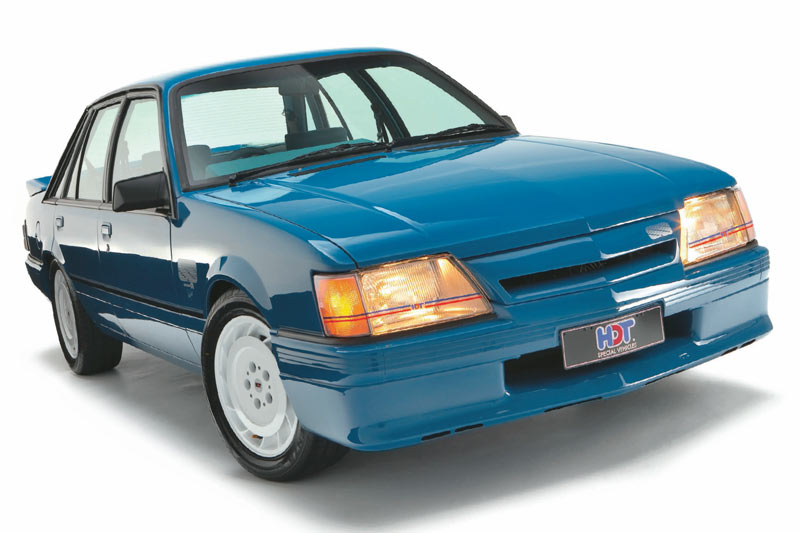
It’s time to get three things off my chest. 1. GT Falcon "Phase 1" 2. VK Group A Commodore "Blue Meanie" 3. VC Valiant V8 "Regal". I grew up with all these vehicles and, up until fairly recently, do not recall any of them described as above back in the day. Phase 2 Falcon? Definitely. VK Group A? Definitely. And VC V8 Valiant? Definitely again. But in particular, when it comes to "Blue Meanies", can everyone please restrict that terminology to The Beatles film of 1969 "Yellow Submarine". Anyway, got that off my chest. Let the controversy begin.
Peter Buckingham,
Email
Ah, Peter, I can see your point here, but I’m afraid the world stands still for no man. Or make and model. Clearly, you’re protesting the fact that terms like Phase 1 and Blue Meanie have entered our hobby, even though they were not used back in the day (Regal, I have to admit, I’m not sure about).
But this is how language evolves, my friend. The Blue Meanie became another name for the VK Group A, mainly because we’re a larrikin lot and love giving people and things nick-names. And the Phase 1 tag came about once the Phase 2 was born as a means of differentiating the pair.
Like I said, it’s just how language develops and changes. Don’t forget, we used to refer to a Waste Transfer Station as `the tip’ and Caitlyn was once known as Bruce. Mind you, calling the bloke who makes my coffee a caffeinated beverage technician is an evolution too far.
Meantime, you should have a chat with Torrens. His hobby horse is the Americanisation of our language and calling a shed find a barn find will send him into spasms. I reckon he needs to have a lie down on the sofa, have a cup of tea and an ANZAC cookie and chill out.
Laguna seeker
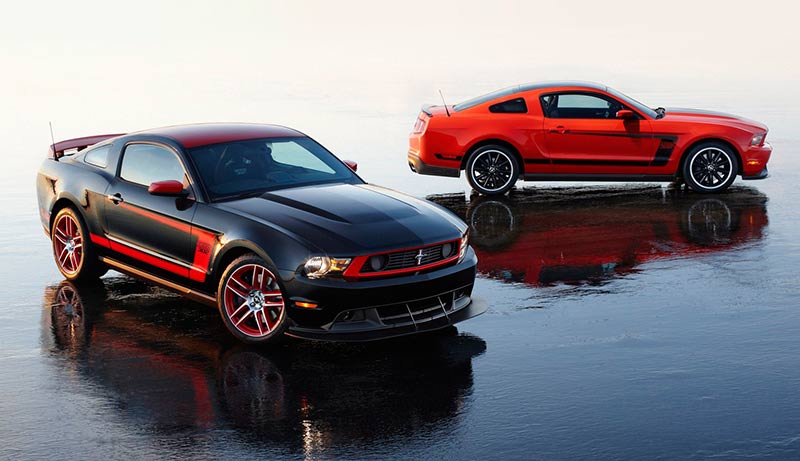
Just read issue 405. Hats off! Some great observations regarding engine rumbles. We got fake rumbles now?
I’ve had V8s most of my life and four years ago, I was fortunate enough to pick up a 2012 Boss 302 Laguna Seca. It’s worth reading up on the R and D that went into this weapon: Coyote all-alloy quad-cam, quad valve, quad exhaust. It has the best cammy rumble and the crackle on the downshift on the track and back roads in our hinterland is second to none.
Regarding this stop/start bullshit: Another unnecessary cost burden? Well, I was a firie in the city in the 60s and we had a classic photo of the Sydney Harbour Bridge nearly covered in smog. We have cleaned up our act.
Bob Darragh,
Tallai, QLD
I take your point about cleaner air being good for us, Bob, but I can’t help but thinking there have been bigger factors in this process than stop-start technology. I reckon unleaded petrol and catalytic converters have been a factor and the generally more efficient cars we drive play a part, too. My gripe is that the production of bigger starter motors, heavier batteries and extra wear on engines with stop-start might negate the actual emissions benefits if you looked at the bigger picture.
Anyway, keep driving the Laguna Seca Mustang and keep smiling. Which should be easy to do in a Laguna Seca which, as you would know, was much more than just another sticker pack for the fifth-gen Mustang. As well as the Torsen diff, R-spec tyres and Recaro seats, I seem to recall that the Laguna Seca also lost its back seat; replaced by a cross-brace to stiffen up the bodyshell. Now that’s tough.
But as far as I know, these were never made in right-hand-drive form, so what’s the deal? Did you have it converted or is it kept for track-only duties?
TRIVIAL PURSUIT
Spacemaster

While on the subject of starter motors and Cadillacs, the electric starter-motor was invented by none other than Charles Kettering. So, when Henry Leland went looking for a replacement for the crank handle, the trail led him to Kettering. Kettering was a successful inventor in those days, operating a company called Dayton Engineering Laboratories. You might know it by another name: Delco.
Ya Knob

Maybe you knew that the first production car to have an electric starter as standard was the 1912 Cadillac Model 30. But you mightn’t know the sorry tale of how it came to be. Seems a good Samaritan by the name of Byron Carter, way back when, stopped to help a lady motorist re-start her stalled car. But it didn’t go well; the car back-fired and the crank handle clobbered old Byron in the face. He was taken to hospital with a broken jaw which got infected and he died of gangrene. But he happened to be a personal friend of Cadillac founder Henry Leland, who vowed he would rid the world of this dangerous menace. He eventually did too.
Write to Morley c/o uniquecars@primecreative.com.au or Unique Cars magazine, 379 Docklands Drive, Docklands, Victoria 3008
Unique Cars magazine Value Guides
Sell your car for free right here
Get your monthly fix of news, reviews and stories on the greatest cars and minds in the automotive world.
Subscribe

.jpg)









.jpg)




